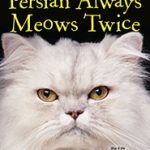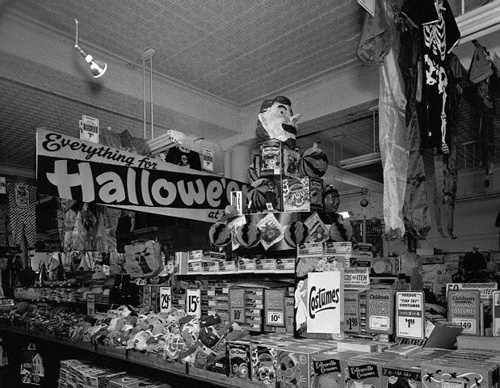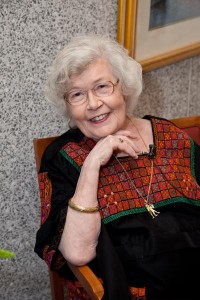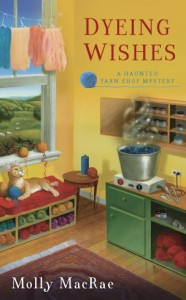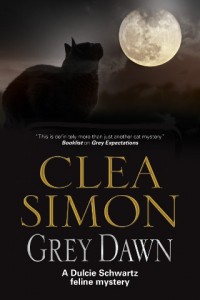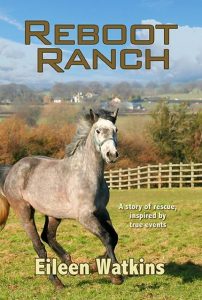
My latest book is a departure from my mystery series, but is a project I’ve had in mind for over a decade. It’s based on some of my experiences and also those of a woman who founded the horse-rescue farm Bright Futures, in western Pennsylvania.
In the late 1990s, I left my 25-year newspaper job to do part-time and freelance p.r. I also moved to a more rural suburb and resumed weekly riding lessons at a new stable. I was studying dressage, mostly for enjoyment, and entering an occasional local show.
One day my instructor put me on a new horse that she was thinking of buying for her lesson string. The poor mare was extremely skinny, and apparently suffered from a breathing problem that hadn’t been dealt with at her current stable. Not expecting much, I got on her…and connected with a beautiful soul. She moved out with pep and tried hard to do everything I asked, including a lovely dressage leg-yield. I told my teacher, “She’s great!” My teacher agreed, but thought the price being asked was too high, considering she would have to get the horse back into condition.
By the time I came back for my next lesson, she and I both had the same idea–“Let’s go halves on her!” Neither of us had deep pockets, but we felt that arrangement could work. We’d also split her board, feed and medical bills. My teacher had a plan to nurse her back to health, and use her as a lesson horse. We renamed her Brenda.
This worked okay for about a year, but Brenda’s ailment, called heaves, proved more entrenched than we’d hoped. She would improve in winter but go downhill in warmer weather, when of course we’d most want to ride and show her. Her second summer with us, at only her third show, she started coughing and breathing too hard to perform. We couldn’t push her anymore.
I won’t go too deeply into the various complications that followed. My trainer moved to a different barn, where Brenda did not get the extra care she needed. I finally bought the horse outright from her, and moved Brenda to yet another farm where she did no work at all, just got the right conditions to recover a bit. But financially, I couldn’t keep that up for long. By the early 2000s, the Great Recession already loomed on the horizon, undermining my shaky part-time sources of income.
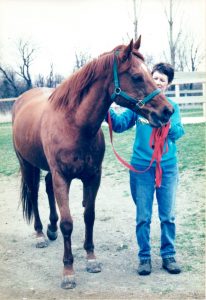
Online, I found Bright Futures, a farm that aimed to find new homes for rescued horses, but also would keep indefinitely any that couldn’t be adopted. I talked on the phone with the owner, Beverlee Dee, who ran the place single-handedly in those days. It was eight hours away, so I knew I was saying goodbye to Brenda forever. But I felt she still had too much life in her to be put to sleep. I would never risk having her fall into the wrong hands and sent to auction…which generally meant, to slaughter.
After Brenda had gained a much-needed 200 lbs., Bev came out with a trailer and picked her up. I cried over her leaving but hoped this would be the best choice for her. Fortunately, it was. Bev kept her alive for almost two more years, under the best possible conditions–getting the kind of food and medications she needed, and turnout most of the time so she could breathe fresh air. Finally, one day, I got a tearful call from Bev to say that Brenda had passed away during the night, out in her pasture. I felt that also was for the best, so neither of us had to make the tough decision to put her down.
During all this time, Bev had shared with me many anecdotes from her early days starting Bright Futures, some of them heart-tugging, others dramatic. We discussed by email putting them together as a nonfiction book, but that never seemed the right format. Many years later, after I’d published several novels with Amber Quill Press, I asked Bev if I could fictionalize her stories a bit, for a novel about a woman starting a horse-rescue farm. She okayed that idea, and later gave her blessing to the finished draft of REBOOT RANCH.
Finding a publisher became the last challenge, because the novel shaped up as women’s fiction, rather than an easily marketed genre like romance or mystery. To tilt it in either of those directions, I felt, would distort its main theme–the passion and dedication required to pursue a “charitable” cause such as animal rescue. It took me about three years to discover Who Chains You Publishing, which specializes in books about exactly that topic! I feel they’ve done a great job of editing and packaging this book, which has truly been a labor of love.
REBOOT RANCH concentrates on the story of a much flashier equine, Murphy, who is a blend of two Thoroughbreds Bev handled at her farm. But keep an eye out for the chestnut mare “Valentine.” She is my fictional tribute to the only horse I ever (if briefly) was able to call “mine”–the unforgettable Brenda.

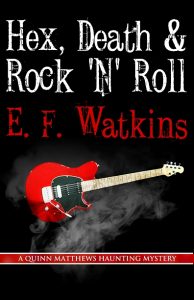
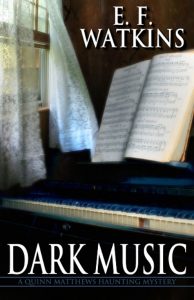 When my first publisher Amber Quill Press closed its metaphorical doors in 2016, it came as a sad blow to me. I already had the prospect of a new publishing contract on the horizon, which softened the effect. But, for business reasons, that company was not interested in re-publishing any of the eight novels I’d put out through AQP, over a span of 13 years. I had to resign myself to letting them all go out of print as both paperbacks and ebooks.
When my first publisher Amber Quill Press closed its metaphorical doors in 2016, it came as a sad blow to me. I already had the prospect of a new publishing contract on the horizon, which softened the effect. But, for business reasons, that company was not interested in re-publishing any of the eight novels I’d put out through AQP, over a span of 13 years. I had to resign myself to letting them all go out of print as both paperbacks and ebooks. At the end of 2015, I retired from a full-time editing position with The Record/ Herald News in New Jersey, where I had worked for ten years. Previously, from 1972 to 1998, I wrote for another daily newspaper, The Star-Ledger. When I started out, newspapers were thriving, and if you wanted a writing job with a regular paycheck, becoming a reporter was your best bet.
At the end of 2015, I retired from a full-time editing position with The Record/ Herald News in New Jersey, where I had worked for ten years. Previously, from 1972 to 1998, I wrote for another daily newspaper, The Star-Ledger. When I started out, newspapers were thriving, and if you wanted a writing job with a regular paycheck, becoming a reporter was your best bet.